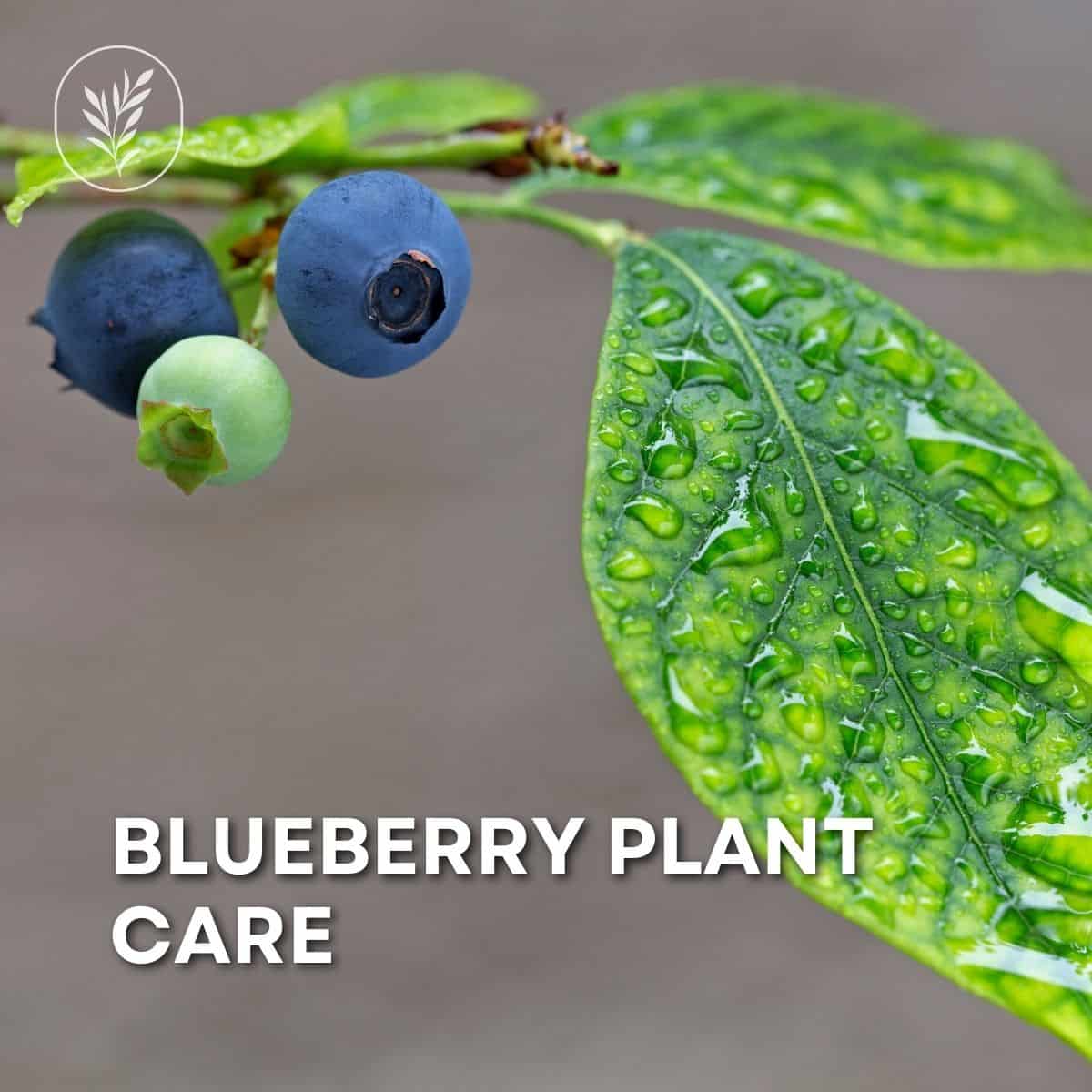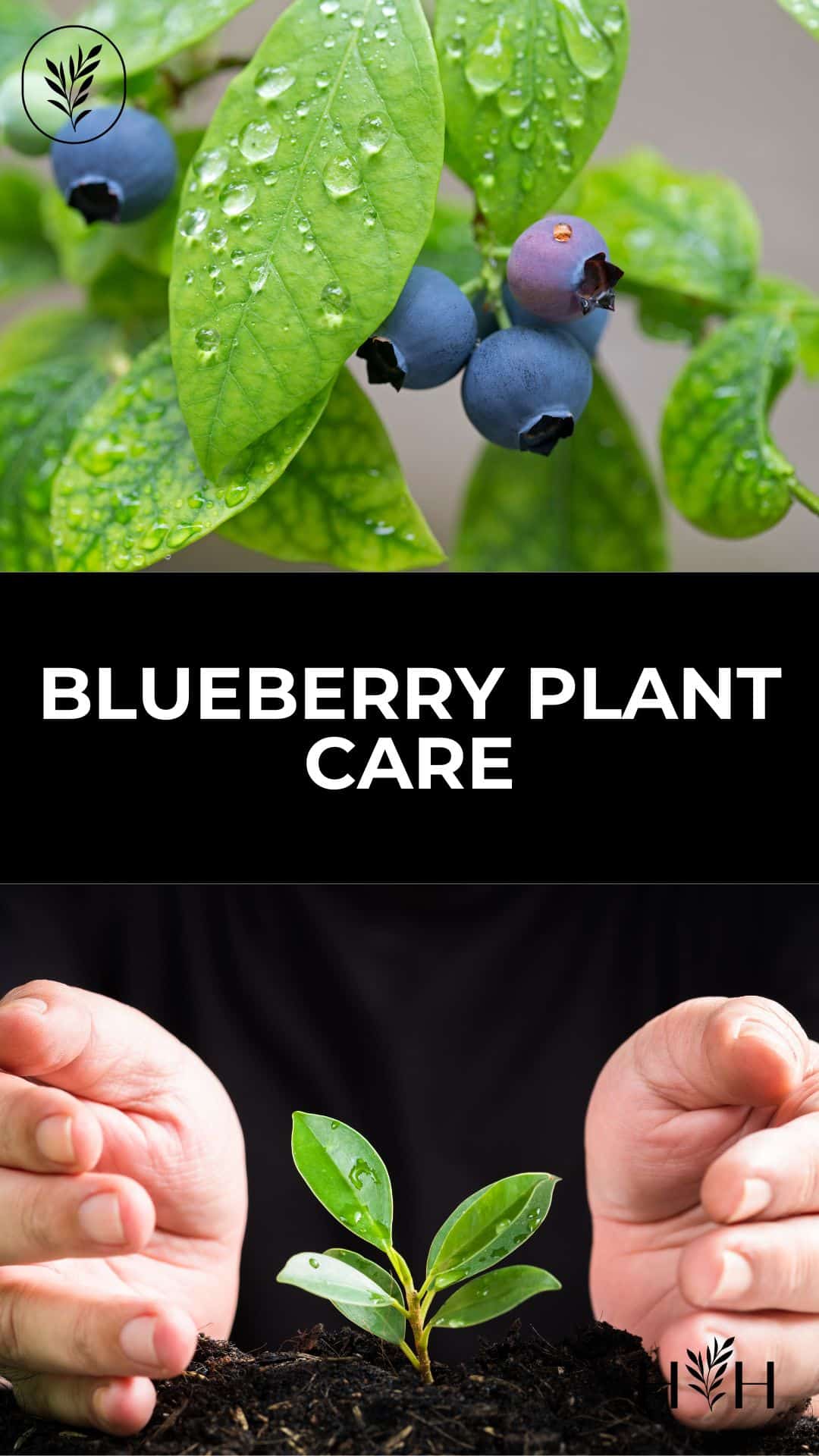Gardening can be a fun and rewarding hobby, especially when you have the right knowledge to help your plants thrive. Blueberry plant care is an essential part of having success with growing these delicious berries in your own backyard. Knowing what type of soil works best for blueberries, how much water they need and even pest control measures are all important elements that go into keeping them healthy. With this article we will cover the basics of blueberry plant care so you can get started on giving your berry bush everything it needs to produce sweet fruit.
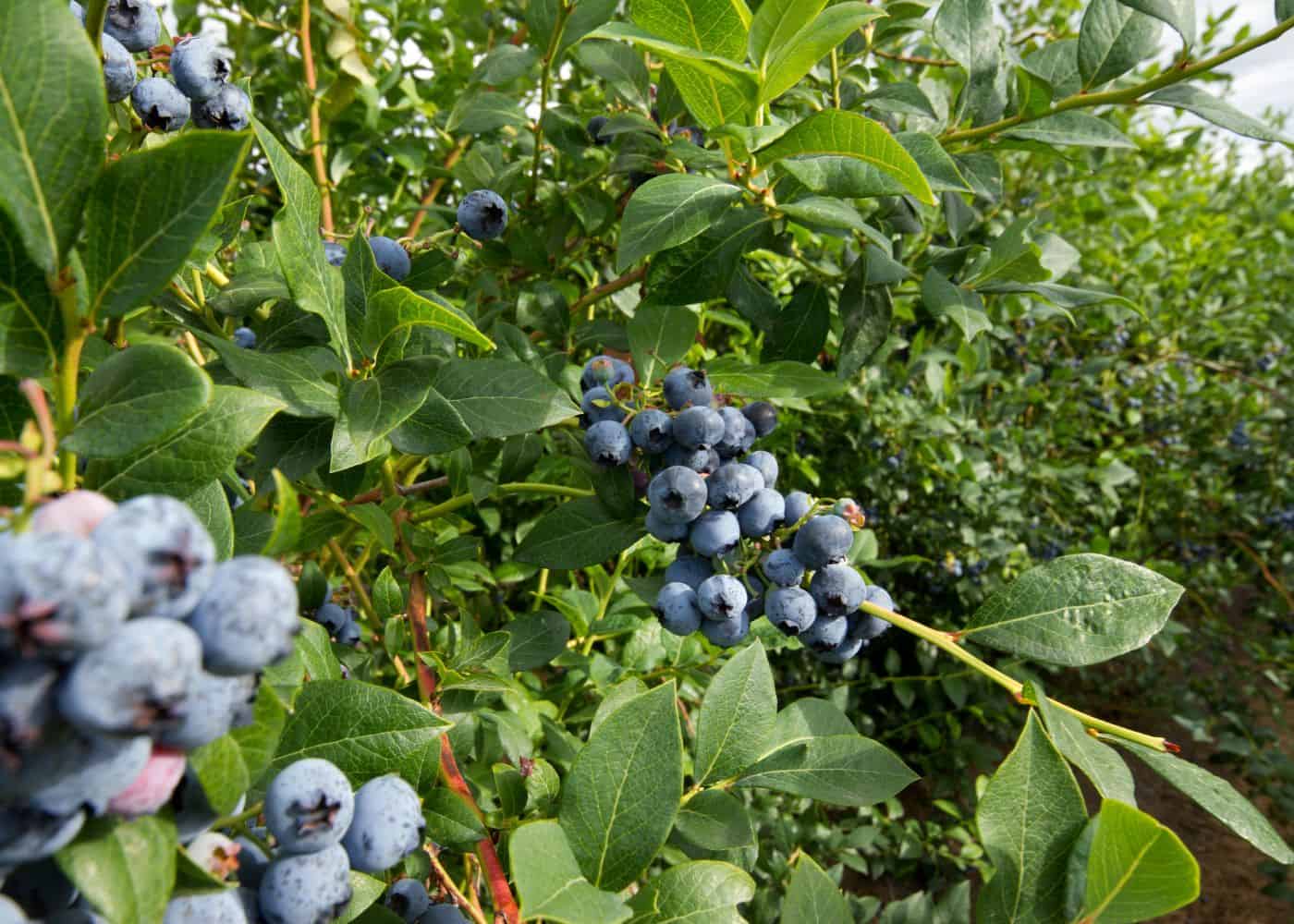
Blueberry plant care basics
Blueberry plants need soil that is well-drained and quite acidic, with a pH between 4.5 and 5.5 (or so). To achieve this, peat moss, composted pine bark, or aged sawdust into the existing soil in your garden bed before planting blueberries. You may also need to add sulfur or another soil acidifier to bring down the pH. Test the pH before planting to ensure it is within the desired range.
Blueberry plants require regular watering throughout their growing season which usually lasts from late spring through early fall, depending on where you live. Aim to water your blueberry plants once every week or two during dry spells so that the top few inches of soil remain moist but not soggy at all times – too much moisture can lead to root rot and other diseases. If you are unsure about how often to water your blueberries, it is best to check the soil regularly by sticking your finger into it up to knuckle depth – if it feels dry then give them a good drink.
Fertilizing your blueberry plants helps promote healthy growth and abundant fruit production each year; however, be sure not to overdo it as too much fertilizer can burn delicate roots and leaves leading to stunted growth or even death of the plant. It is recommended that you use an organic fertilizer such as fish emulsion or manure tea every 2-3 weeks during active growing periods (late spring through early fall). Additionally, adding some mulch around the base of each plant will help keep weeds away while also helping retain moisture in hot weather conditions.
Keeping pests away from your blueberry bushes is key for maintaining healthy foliage and preventing damage caused by insects like aphids or caterpillars which feed on tender new shoots and leaves causing them to become deformed or discolored over time if left unchecked. The best way to protect against these critters is by using natural pest control methods such as introducing beneficial bugs like ladybugs into your garden which prey upon harmful pests without harming any beneficial ones. Alternatively, spraying neem oil onto affected areas can also provide relief from pesky invaders quickly without damaging nearby vegetation either.
Once you have the basics of blueberry plant care down, it’s time to dive deeper into soil requirements and other essential components for growing healthy plants.
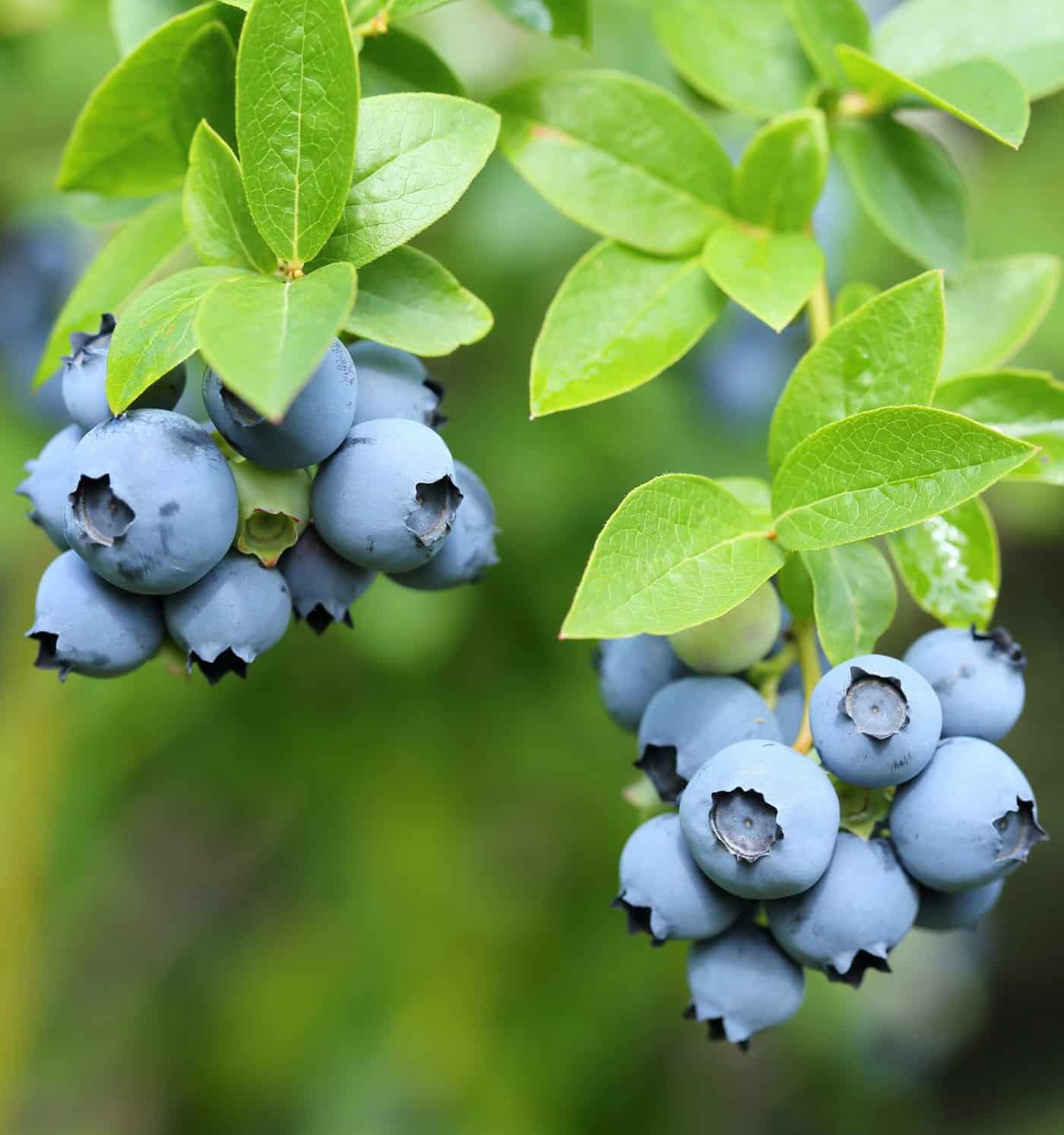
Soil requirements for vibrant blueberry plants
When it comes to growing blueberries, soil is one of the most important factors. Blueberries need acidic soil with a pH of 4.5-5.5 for optimal growth and fruiting. The ideal soil should be well-draining, rich in organic matter, and have plenty of nitrogen available for the plants to thrive.
If you’re planting blueberry bushes in your garden or yard, it’s important to test your soil before getting started so that you can make any necessary adjustments ahead of time. You can purchase an inexpensive home testing kit from your local gardening store or nursery; this will tell you what type of soil you have and its pH level so that you know whether or not it’s suitable for blueberry plants.
If your soil isn’t quite right, don’t worry. There are several ways to adjust the pH level and add nutrients such as composted manure or peat moss into the mix if needed. If possible, try to find an area with naturally acidic soils like those found near streams or lakes; these areas tend to be more conducive for growing blueberries than other types of terrain due to their higher levels of natural acidity and moisture content.
It’s important to get the soil requirements for blueberry plants right, as this is essential for healthy growth. Now let’s look at how much water these plants need in order to thrive.
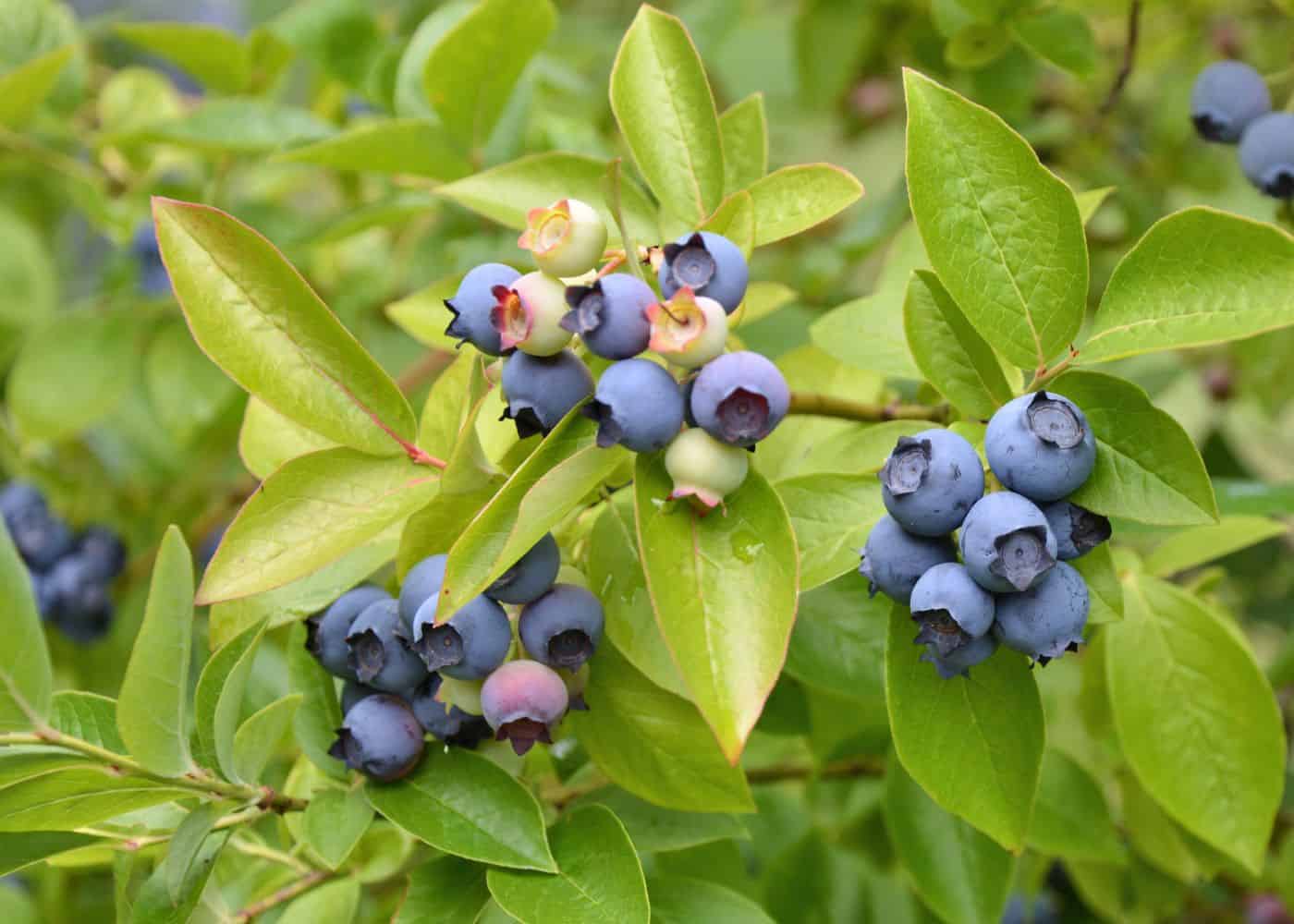
Watering blueberry bushes
Watering is a key part of blueberry plant care. Blueberries need consistent moisture throughout the growing season, but they don’t like to be waterlogged or soggy. Aim to keep the soil evenly moist but not wet. Over-watering can lead to root rot and other issues, so it’s important to get your watering routine just right for healthy plants and delicious fruit.
The best way to determine if your blueberry plants need water is by checking the soil with your finger. If it feels dry about an inch below the surface, then it’s time for a drink. Water until you see some runoff coming out of the bottom of the pot or container. You may also want to consider investing in a moisture meter which will help you accurately measure how much water is in your soil without having to dig around with your fingers every time.
When watering blueberries, make sure that you use lukewarm water rather than cold as this helps reduce transplant shock and encourages growth during hot summer months when temperatures are high. It’s also important that you avoid getting any foliage wet while watering as this can cause fungal diseases such as powdery mildew or leaf spot disease which can damage leaves and stunt growth.
If possible, try using rainwater collected from gutters instead of tap water since rainwater tends to be softer on plants than hard tap water which contains minerals that can build up over time in soils leading to nutrient deficiencies in plants. Rain barrels are an easy way collect rainwater for gardening purposes and many municipalities offer them at discounted prices making them even more affordable.
Proper watering is essential for blueberry plant care; however, fertilizing should also be done in order to ensure the health of your plants.
Fertilizing blueberry plants
Fertilizing blueberry plants is an important part of keeping them healthy and producing abundant fruit. An acid-based fertilizer specifically formulated for blueberries, or one that is high in nitrogen and low in phosphorus such as fish emulsion or compost tea, should be used to ensure the best results.
When fertilizing your blueberry plants, start by testing the soil’s pH level with a home test kit. Blueberries prefer a slightly acidic soil with a pH between 4.5 and 5.5; if your soil falls outside this range you may need to add sulfur or lime to adjust it accordingly before adding any fertilizer.
Established blueberry plants should be fertilized every two weeks during their growing season with either liquid or granular forms of organic matter such as manure tea or composted cow manure that has been diluted according to package instructions; make sure you water thoroughly afterwards so that nutrients can penetrate deeply into the root zone where they are most needed.
Pest control
Pest Control is an important part of blueberry plant care. Regular monitoring for signs of infestation can help you catch any issues early and take action to protect your plants. Common pests that may affect blueberries include aphids, mites, thrips, caterpillars, and scale insects.
Aphids are small sap-sucking insects that feed on the leaves and stems of the plant. They can cause leaf curling or yellowing as well as stunted growth in young plants. To control aphids naturally, use a strong stream of water to knock them off the plant or spray with neem oil or insecticidal soap solutions.
Mites are tiny spider-like creatures that feed on foliage by sucking out its juices causing stippling and discoloration on leaves which can eventually lead to defoliation if left unchecked. Neem oil or insecticidal soaps are effective against mites but it’s best to try to prevent them from taking hold in the first place by keeping weeds away from your garden beds since they provide shelter for these pests.
Thrips are very small flying insects that feed on flower petals and new growth causing silvery streaks along leaf edges which will eventually turn brown if not treated quickly enough. Insecticidal soaps work well against thrips but you should also consider planting companion flowers such as marigolds nearby which act as natural repellents for these pesky bugs.
Caterpillars love eating blueberry foliage too. Handpicking is one way to get rid of them but spraying with Bacillus thuringiensis (Bt) solution will kill them without harming beneficial pollinators like bees and butterflies who may be visiting your garden at the same time.
Scale insects attach themselves onto stems where they suck out sap leaving behind a sticky residue known as honeydew which attracts ants who then spread their eggs further throughout your garden beds – yuck. The best way to deal with scale is by pruning affected branches before treating with neem oil or insecticidal soap solutions every few weeks until all signs of infestation have been eliminated completely.
Finally, keep an eye out for birds pecking at ripe berries – netting over bushes during fruiting season helps deter this problem while still allowing sunlight through so fruit production isn’t compromised either. With regular monitoring and quick action when necessary you can keep pest problems under control in no time at all. Happy gardening everyone.
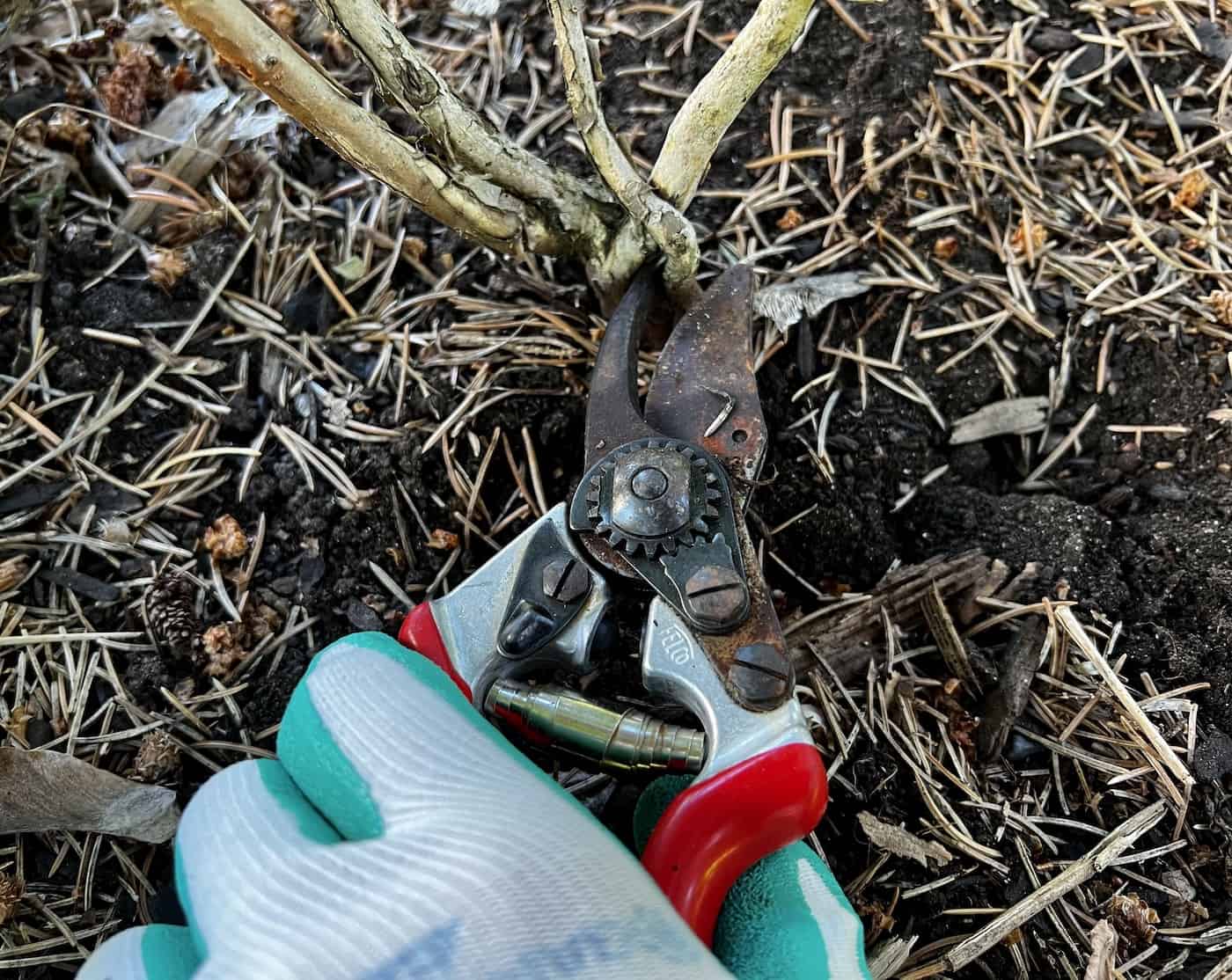
FAQs about blueberry plant care
Do blueberries like sun or shade?
Blueberries are a unique fruit in that they require both sun and shade to thrive. They need full sun for at least four hours per day but also benefit from some afternoon shade. This helps protect the berries from getting too hot and drying out. When planted in an area with plenty of sunlight, be sure to provide some dappled or partial shade during the hottest part of the day to ensure optimal growth and fruiting.
How do you take care of a potted blueberry bush?
To care for a potted blueberry bush, start by selecting a pot that is at least 12 inches in diameter and has drainage holes. Fill the pot with well-draining soil, such as one made of peat moss and perlite. Place the bush in the center of the pot and water it thoroughly until moisture begins to drain from the bottom. Keep soil moist but not soggy; water when the top inch of soil feels dry to the touch. Fertilize during spring and summer months using an all-purpose fertilizer. Prune regularly to maintain desired shape or size, removing dead or diseased branches as needed.
Do I need to prune blueberry bushes?
Yes, pruning blueberry bushes is an important part of maintaining healthy and productive plants. Pruning helps to keep the plant in shape, encourages new growth, and removes dead or diseased branches. It should be done in late winter or early spring before the buds start to swell.
How long does it take for blueberries to grow?
Generally, it takes between three and four months after blossoming for blueberry bushes to produce ripe berries that can be harvested. The exact time frame depends on the variety of blueberry bush planted, the climate in which it is grown, and how well cared for the plant is. With proper care and maintenance, your blueberry bush will provide you with delicious fruits every year.
Before you go…
Blueberry plants are a great addition to any garden, and with the right care, they can provide you with delicious fruit for years to come. With proper soil requirements, watering, fertilizing, and pest control, you can ensure that your blueberry plant is healthy and thriving. Taking the time to properly care for your blueberry plant will pay off in the end when it produces an abundance of sweet berries. Blueberry plant care is essential if you want your plants to reach their full potential.
Resources
- Companion plants for blueberries (and what not to plant nearby)
- When to fertilize blueberries: Seasonal plant food timing for blueberry bushes
- A gardener’s guide to pruning blueberries
- When to prune blueberry bushes?
- How to prune blueberry bushes?
References
- James, L. (2019). Blueberry Cultivation: A Guide On How To Grow Blueberries. Independently Published.
- Gault, K. S. (2010). The Complete Guide to Growing Your Own Fruits and Berries: Everything You Need to Know Explained Simply (p. 147). Atlantic Publishing Company.
- Beckwith, C. S. (2011). Cranberry and Blueberry Culture – With Information Relating to Growing for Profit. Read Books Ltd.
- Williamson, J. G., Lyrene, P. M., & Olmstead, J. W. (2018, July 23). BLUEBERRY GARDENER’S GUIDE. IFAS Extension. Retrieved February 22, 2023, from https://edis.ifas.ufl.edu/publication/MG359
Need more info?
Are you interested in learning more about blueberry plant care? Here are our best articles about it!


